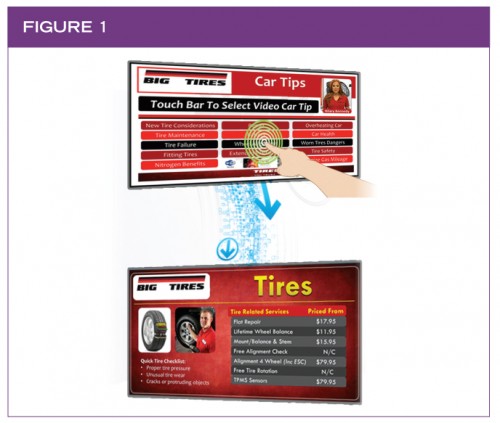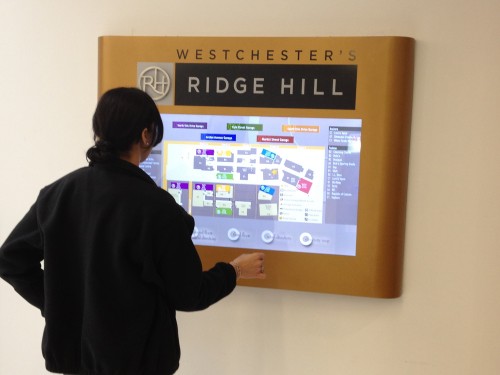There are many creative possibilities. The motivation that entices shoppers to touch the screen in the first place might be video footage of a race car driver, for example, discussing why it is important to use high-quality motor oils in today’s advanced vehicles.
Further, at the front end of customer engagement, digital signage can cast a wider net, cycling through a playlist of content with a wide variety of spots designed to sell oil, tires, batteries, air filters and so on. Each linear segment of this list can be backed up by interactive components triggered whenever it happens to pique a shopper’s curiosity enough to touch the screen.
On the back end, meanwhile, the system focuses on using collected data to stay in touch with shoppers after they leave the store and offer incentives for them to return. In essence, these functions help extend the retailer’s marketing reach well beyond the display panel itself.
Non-human triggers
Interactivity needs not be limited to human triggers, either. An interactive display system in a ski shop at the base of a mountain, for example, might focus more on triggers relating to remote temperature, wind and solar sensors at that top of the mountain, so as to report up-to-the-minute skiing conditions and launch specific presentations accordingly.
On a very bright day, for instance, the system could bring up reminders to buy sunscreen and wear goggles. During heavy snowfall, on the other hand, the screen may emphasize the importance of donning warm gloves.
This way, skiers who are busy putting on their boots and other gear—and might normally only glance at a digital sign in passing—will have cause to pay closer attention to the on-screen content.
At one point, such technology seemed the stuff of science fiction; but today, this can all be achieved through the proper integration of conditional event triggers with digital signage content databases. The possibilities are vast, depending on the creative imagination of marketers and other communicators.
To be sure, these types of digital signage applications, for the most part, are still in their infancy—but with the ongoing convergence between smartphones, tablet computers, kiosks and smart TVs, interactivity will increasingly play an important role in the expansion of digital signage as a communications medium. It can certainly be advocated where it will add efficiencies through automation and will make positive contributions by helping customers find useful information at the touch of a finger.
David Little is director of marketing for Keywest Technology, which develops digital signage technologies and networks. For more information, visit www.keywesttechnology.com.







